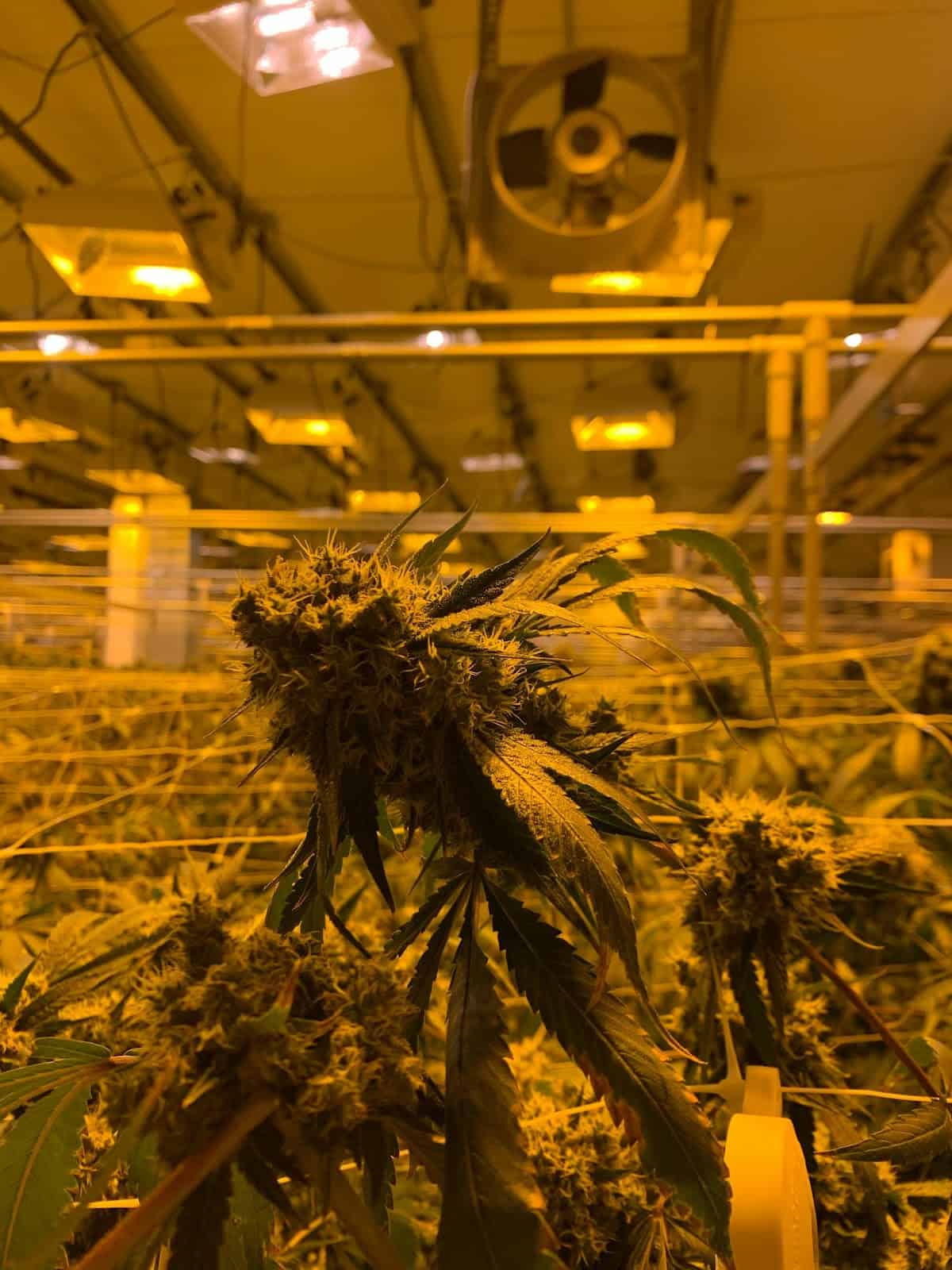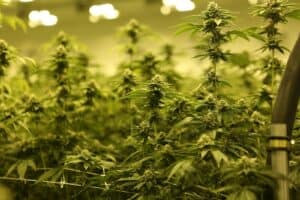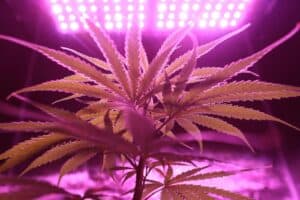Cannabis hydroponics is a new way to cultivate cannabis without soil. Compared to the standard method of growing marijuana, this strategy not only promotes faster growth but also has the potential to deliver higher yields.
Mastering hydroponic growing requires knowledge of plant nutritional requirements and how to meet them. You will need to discover different hydroponic setups and cutting-edge technologies to enhance your growing experience. Also, being prepared for common challenges will help ensure a good harvest.
Cannabis hydroponics might transform your cultivation technique regardless of your growing skill. Learn how to maximize your plant’s potential and benefit from this cutting-edge growing technique to grow weed at home.
Key Takeaways
- Hydroponic cannabis grows faster and yields more.
- Hydroponic gardening requires extensive plant nutrition knowledge.
- Addressing common challenges helps ensure a productive hydroponic harvest.
Understanding Hydroponics
Hydroponic cultivation grows plants without soil in nutrient-rich water. Cannabis production benefits from this method’s higher yields and growth rates. Successful gardening requires knowledge of hydroponic methods, their benefits, and how they vary from soil-based growing systems.
Principles of Hydroponic Systems
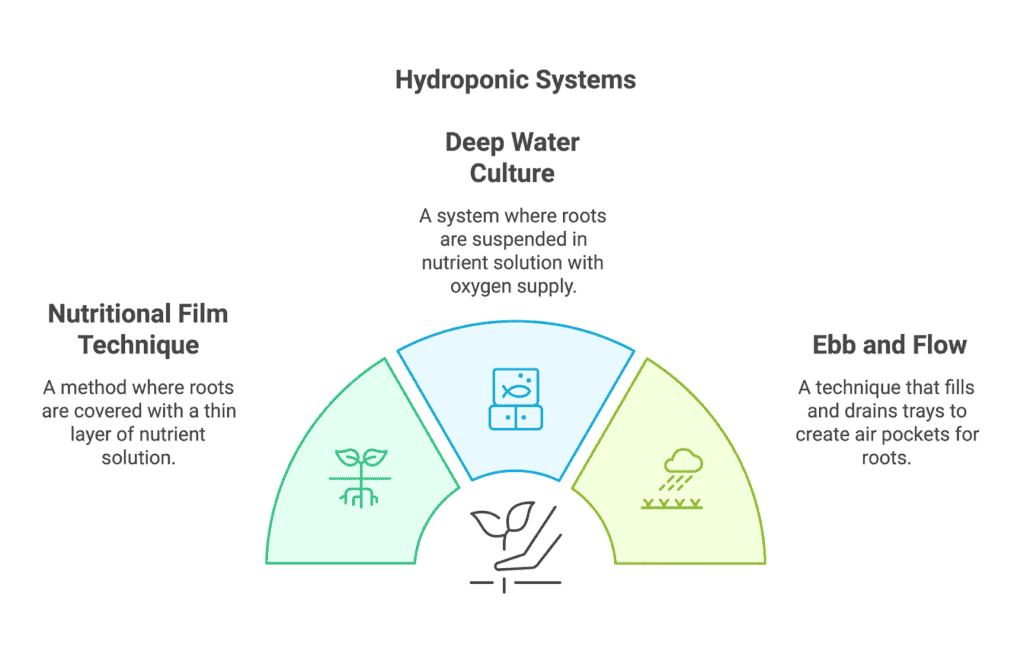
A few basic ideas underpin hydroponic systems. First, they immediately supply plants with all nutrients via water. By eliminating soil, growing conditions may be better controlled.
Hydroponics typically involves:
- The Nutritional Film Technique (NFT): This covers the roots with a thin coating of nutritional solution.
- Deep Water Culture (DWC): Roots are suspended in a nutrient solution, with air stones providing oxygen.
- Ebb and Flow: The nutrient solution briefly fills the grow tray with a nutritional solution and drains it to produce air pockets for root health.
Benefits of Using Hydroponics for Cannabis Cultivation

Growing cannabis hydroponically offers many benefits. This growing method yields faster growth than conventional gardening. Plants mature faster when they have direct access to nutrients.
Additionally, hydroponics allows:
- Space Efficiency: Growing more plants in less space maximizes production.
- Water Conservation: Hydroponics uses less water than conventional methods.
- Disease Control: No soil means fewer pests and diseases.
These things serve to make gardening more successful and fruitful.
How Hydroponics and Conventional Soil Cultivation Compare
There are noteworthy distinctions between hydroponics and regular soil cultivation. Since plants absorb nutrients slowly, soil gardening may impede growth.
What hydroponics offers:
- Nutrients are available immediately.
- Manage conditions indoors or in greenhouses to reduce weather dependence.
However, beginners may find soil cultivation easier. Soil buffers nutrients, simplifying management. Every approach has advantages and cons, but when done properly, hydroponics can offer greater results.
Setting Up Your Hydroponic Cannabis Garden
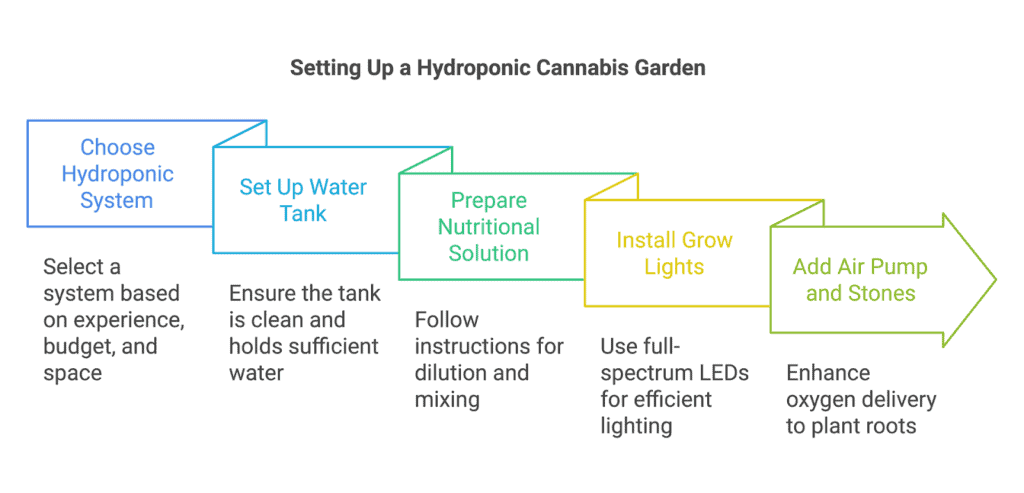
Starting a hydroponic cannabis garden requires planning and tools. The setup, nutritional solution, and lighting must be considered for optimal growth.
Finding the Right Hydroponic System
The hydroponic system you choose determines your cannabis garden. Popular systems include ebb and flow, NFT, and DWC. Every type has pros and cons.
Your choice depends on your gardening experience, budget, and space.
Essential Hydroponic Elements
A few key aspects determine your hydroponic system’s success. You’ll need these:
- A water tank that holds your nutrition solution. It should be clean and hold enough water for your plants.
- Special solutions to provide plant nutrients. Follow the dilution and mixing instructions carefully.
- Buy good grow lights for indoor growing. Full-spectrum LEDs mimic sunshine and are efficient.
- Stones and an air pump assist the plant roots receive oxygen, which fosters healthy growth.
Each part is essential for plant growth.
Buying or Building a Hydroponic System
Your budget and expertise will influence whether you build or buy a hydroponic system. Handy people can save money by building their own systems. Many online DIY tutorials can walk you through the procedure.
Buy a pre-made hydroponic system for convenience. Gardening supply stores and online retailers offer several options. Choose a system that meets your needs and space.
To maximize your cannabis yield, use high-quality, suitable parts.
Cannabis Plant Nutrition Needs

Growing cannabis hydroponically requires knowing your plants’ nutritional needs. Balanced pH and nutrition solutions promote healthy growth.
Making the Best Nutrient Solution
When preparing a cannabis plant nutrition solution, focus on nitrogen (N), phosphorus (P), and potassium (K). Plants need these nutrients to grow.
- Nitrogen supports leaf and vegetative growth.
- Phosphorus strengthens roots and sprouts.
- Potassium improves plant health and stress tolerance.
Buy pre-mixed nutrition solutions or make your own. Make sure the ratio you employ is appropriate for the stage at which your plants are growing. Various hydroponic diet charts have cannabis-specific information on the appropriate nutrient ratios to use.
Maintaining Nutrient Balance and pH Levels
Cannabis needs a balanced nutrient solution to grow well. Check potassium, phosphorus, and nitrogen levels regularly.
The pH of your nutrition solution is also crucial. Cannabis grows best at 5.5–6.5 pH in hydroponics. Your plants may have problems receiving nutrients if the pH is too high or low.
Be sure to monitor your solution with a pH meter often and adjust the pH accordingly. Achieving the right nutritional balance ensures plant growth and high-quality buds.
Adjusting Nutrient Concentrations for Growth Stages
Cannabis plants have various nutritional needs during the seedling, vegetative, and blooming stages.
- Seedlings benefit from root boosters or diluted nutrients. Try 1/5 vegetative formula.
- Vegetative plants need more nitrogen for leafy growth. Use a balanced NPK ratio now.
- Flowering plants need potassium and phosphorus. Make your nutrient solution focus on strong buds.
Review the nutrient product directions to ensure optimum concentration at each stage. By adapting your fertilizer approach to growing stages, you may boost hydroponic production and quality.
Advanced Hydroponic Techniques for Cannabis
Nutrient Film Technique (NFT) and Deep Water Culture are popular hydroponic cannabis growth technologies. Every approach has unique benefits that boost plant health and productivity.
Deep-Water Culture (DWC)
In Deep Water Culture hydroponics, cannabis roots are immersed in a nutrient-rich solution. This method maximizes oxygen exposure, accelerating growth.
In DWC, the water is oxygenated using air stones and an air pump. Direct nutrient absorption by the roots promotes fast growth and possibly higher yields.
To maximize nutrient uptake, pH should be between 5.5 and 6.5, and water levels monitored regularly. Check for algae growth, which blocks light and oxygen and harms plants.
Nutrient Film Technique
Cannabis plant roots receive a thin layer of fertilizer solution using the Fertilizer Film Technique. This method guarantees plant oxygen and nutrient availability.
The nutrition solution travels constantly through this slanted channel. While in a shallow nutrient pool, the modest inclination keeps roots exposed to air.
One benefit of NFT is that it uses less water than other methods. However, pump failure could deprive plants of oxygen and nutrients, therefore it must be carefully maintained.
Tailoring Techniques to Cannabis Strains
Some cannabis strains thrive in hydroponics since they can handle water and nutrient fluctuations better.
Hydroponic strains should have a strong genetic background for enduring extreme stress. Indica strains often tolerate DWC due to their strong root systems. Sativa strains may prefer NFT because they grow taller and benefit from continual nutrient input.
Always research your strain’s needs for optimal growth and yield. Adjust nutrient ratios to plant stage for best results.
Common Challenges in Hydroponic Cannabis Cultivation

Hydroponic cannabis growing offers several pros and cons. Pests, diseases, and system issues can harm plant health and growth. By fixing these difficulties, you may improve your hydroponic system and ensure a good crop.
Prevention and Treatment of Common Diseases
Powdery mildew and root rot can harm hydroponic plants. Root rot is often caused by overwatering or inadequate oxygen. Avoid this with well-aerated systems and optimum moisture levels.
Addressing root rot:
- Get rid of affected plants.
- Clean the system thoroughly.
- Introduce beneficial microbes to improve solution quality.
High humidity promotes powdery mildew. Keep humidity low and ventilate properly. Remove affected leaves and use organic fungicides to inhibit the spread.
Hydroponic Insect Control
In hydroponic cannabis, pest control is crucial. Common pests include aphids, whiteflies, and spider mites. These pests can quickly damage plants and lower yields.
For pest control:
- Check your plants for pests often.
- Use natural insecticides like soap or neem oil.
- Introduce beneficial insects like ladybugs to control pest populations.
- Keep your gardening room clean to avoid pests.
Troubleshooting Hydroponic System Issues
Multiple difficulties can develop with hydroponic systems. Pump failures, dietary deficiencies, and pH anomalies are common.
Diagnose these issues:
- Regularly check pH. Keep it between 5.5 and 6.5 for optimal nutrition absorption.
- Monitor the electrical conductivity (EC) of the solution to ensure proper nutrient levels. Adjust as needed.
- Check pump and filter operation. Pump failures that cut off plant water can be prevented with frequent maintenance.
Bottom Line
Optimizing managed cannabis hydroponics offers a revolutionary approach to cultivation, delivering faster growth and higher yields compared to traditional methods. By mastering nutrient management, and advanced techniques, and overcoming common challenges, growers can unlock the full potential of their cannabis plants. With proper planning and care, hydroponics provides a sustainable and efficient pathway to thriving cannabis production.
Frequently Asked Questions on the Advantages of Hydroponic Growing
What differentiates hydroponic and soil cannabis cultivation?
Hydroponics uses nutrient-rich water instead of soil. This method allows faster development and nutritional control. However, soil cultivation depends on soil properties, which might affect nutrient delivery and plant health.
What nutrients do hydroponic cannabis systems need?
Hydroponic cannabis requires potassium, phosphorus, and nitrogen. Plant health also depends on magnesium and calcium. Balanced nutrition solutions give plants the nutrients they need to develop.
How should an outdoor hydroponic cannabis system be set up?
An outdoor hydroponic system needs sun and drainage. Choose weatherproof gear. Healthy growth requires regular fertilizer and water quality monitoring.
How can hydroponics grow cannabis from seed?
Let seeds germinate in peat pellets or rock wool. Add seedlings to your hydroponic system after they have roots. Maintain light and nutrient levels for optimum growth.
What is the average hydroponic cannabis growth cycle?
The average hydroponic cannabis grow cycle lasts 8-10 weeks. This includes vegetative and flowering stages. Time can vary with strain and development.
How often should hydroponic cannabis plants be watered?
Hydroponic system configuration determines the watering frequency. Water your plants every one to three hours during the day. Keep your roots wet but not soggy for best results.

